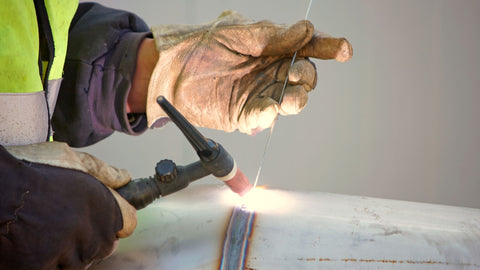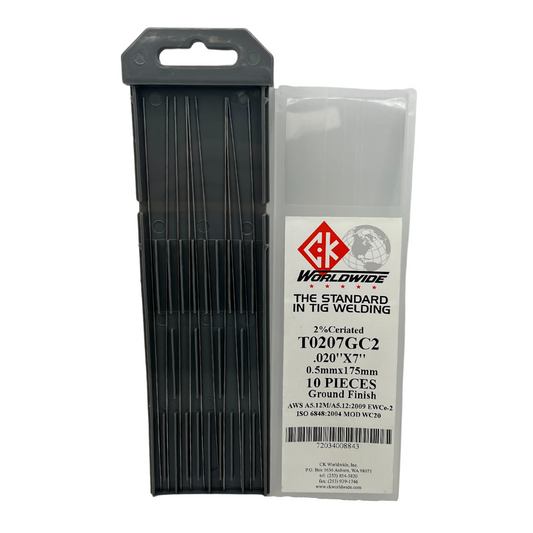Welding is both an art and a science, requiring a delicate balance of skill, technique, and the right equipment. When it comes to welding steel, selecting the appropriate tungsten electrode is crucial for achieving optimal results. Tungsten, a robust and high-melting-point metal, serves as the foundation for electrodes used in various welding applications. In this blog post, we will explore the key considerations in choosing the best tungsten for welding steel.

Understanding Tungsten Types:
Before delving into the specifics, it's essential to grasp the different types of tungsten electrodes available for welding. The most common varieties include pure tungsten (classified as WP), thoriated tungsten (WT), ceriated tungsten (WC), lanthanated tungsten (WL), and rare earth tungsten (WRe).
-
Pure tungsten (WP): While suitable for certain applications, it is not the ideal choice for welding steel due to its lower thermal conductivity and higher chances of contamination.
-
Thoriated tungsten (WT): Once widely used, it has fallen out of favor due to its radioactive nature. As a result, industry professionals are increasingly turning to alternatives such as ceriated, lanthanated, and rare earth tungsten.
Choosing the Right Tungsten for Steel Welding:
-
Ceriated Tungsten (WC):
- Ceriated tungsten electrodes are an excellent choice for welding steel. They offer better arc stability, a lower burn-off rate, and improved performance at lower amperages compared to pure tungsten.
- With a lower work function, ceriated tungsten operates well on both AC and DC welding applications, making it versatile for various steel welding projects.
-
Lanthanated Tungsten (WL):
- Lanthanated tungsten electrodes exhibit similar characteristics to ceriated tungsten, providing stability and longevity in welding operations.
- WL electrodes are known for their excellent arc starting capabilities, making them a preferred choice for applications where consistent starts are crucial, such as when welding steel.
-
Rare Earth Tungsten (WRe):
- Rare earth tungsten electrodes, composed of a mix of tungsten and rare earth oxides, offer high-temperature stability and resistance to weld contamination.
- These electrodes are known for their longevity, making them suitable for heavy-duty steel welding applications that demand prolonged electrode life.

Considerations for Steel Welding:
-
Type of Steel:
- Different steel alloys require different welding approaches. For instance, mild steel may be more forgiving than high-alloy steels. Consider the specific steel composition to determine the most suitable tungsten electrode.
-
Welding Current and Polarity:
- AC or DC welding, along with the specific polarity used, can influence tungsten electrode selection. Certain electrodes may perform better under AC or DC, and it's crucial to align the electrode with the welding current requirements.
-
Thickness of Steel:
- Thicker steel sections may require higher amperages, affecting the electrode's performance. Choose a tungsten electrode that can handle the required current without compromising stability or longevity.
In the world of steel welding, the choice of tungsten electrode plays a pivotal role in achieving high-quality welds. While ceriated, lanthanated, and rare earth tungsten electrodes have proven effective, the ultimate selection depends on the specific requirements of the welding project. By understanding the characteristics of each tungsten type and considering factors such as steel type, welding current, and thickness, welders can confidently choose the best tungsten for welding steel, ensuring precise, reliable, and durable results in their work.





